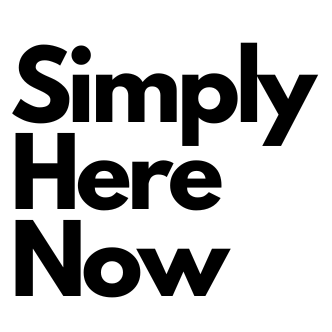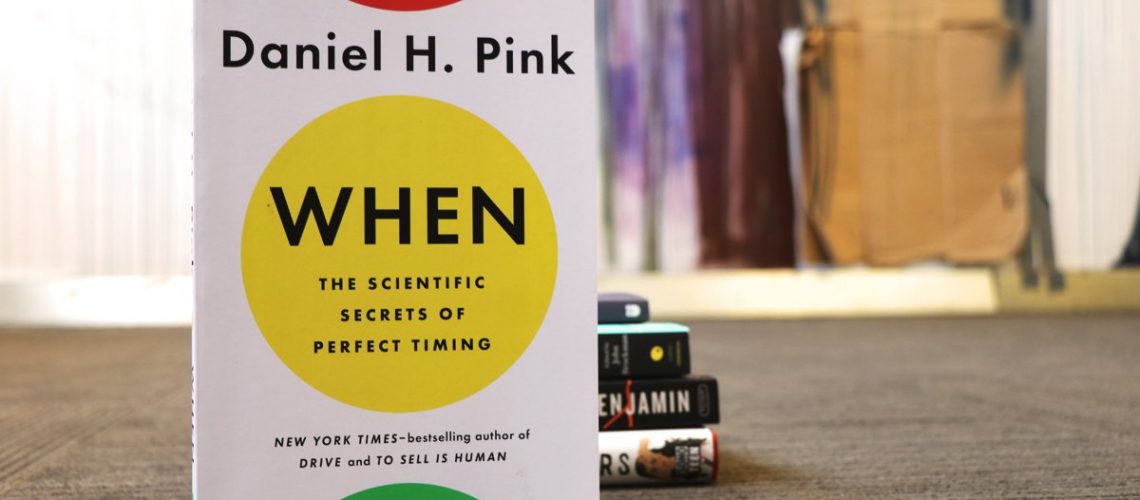How Best to Live, Work, and Succeed.
Everyone knows that timing is everything. But we don’t know much about timing itself. Our lives are a never-ending stream of “when” decisions: when to start a business, schedule a class, get serious about a person. Yet we make those decisions based on intuition and guesswork. Timing is often assumed an art, but really, timing is a science.
In When, Daniel Pink distills cutting-edge research and data on timing and synthesizes them into practical takeaways that give us compelling insights into how we can live richer, more engaged lives.
Drawing on a vast amount of research from psychology, biology, and economics, Pink reveals how best to live, work, and succeed.
Key Takeaways
Surveys show that the most unproductive time of the day is precisely 2:55 PM. Directly between 2-4PM. Pink calls this “The Bermuda Triangle of the day” In the two hours of the day (2-4PM) between the time most people wake up, 7AM, and fall asleep, 11PM, intelligence, sound judgement, productivity mysteriously vanish.
To understand why your intelligence, judgement and productivity are scientifically proven to decrease midday, you need to understand your biological clock that scientist call your circadian rhythm. Your body follows a daily rhythm controlled by an internal clock in your brain. Your internal clock triggers a release of hormones like cortisol and melatonin, which help you wake up in the morning and fall asleep at night.
Your internal clock also triggers a rise and fall in attention and mental ability throughout the day. Upon waking up everyday, your attention and mental ability goes through a peak trough and rebound over the course of the next 16 hours. The trough occurs approximately 7-8 hours after you wake up, which is usually between 2-4PM.
The best thing you can do in the beginning of the daily trough is to take a nap. The best nap you can take is between 10-20 minutes long. A five minute nap has no effect, but a 10 minute nap is scientifically proven to increase mental alertness for 3 hours. High-Performers routinely take naps to boost performance.
“In many ways naps are zambonis for our brains. They smooth out the niccs, the scuffs, and scratches a typical day has left on our mental ice.” Daniel Pink
Pink recommends a particularly powerful type of nap called the “Nappacino” Consume a cup of coffee or caffeinated beverage, then put your sleep mask on, ear plugs in, and lay down for 10-20 minutes. The caffeine won’t enter your blood stream for 20-25 minutes, so you’ll have enough time to restore your mental abilities and wake up alert, ready to do your best work.
If your work environment doesn’t allow you to take a nap during the afternoon trough, you should at least avoid doing any important work and instead only execute familiar and mundane tasks. If you absolutely must do important work, make sure you’re following a step-by-step checklist to avoid making costly mistakes because in the trough you are prone to making costly mistakes.
Ideally, your most important work should be reserved before and after the trough when your attention peaks and rebounds. The science reveals that the type of work you should do during the peak is different than the work you should do during the rebound. All important work falls into two categories: Logical work and Insight work.
- Logical Work should be completed before the afternoon trough.Typically completed using the left side of the brain whereas associated with logical tasks include, clarify, organize, explain, structure. Some examples include: programming, writing a legal brief, taking a math test, or solving logical problems.
- Insight Work should be completed after the afternoon trough, when you attention rebounds. Insight work relies heavily on the right side of the brain. Examples include: creative writing, designing, brainstorming, and solving insight problems. Insight problems require pausing and using one’s imagination to find the answer. Researchers find that people who are given insight problems in late afternoon or evening during the rebound period of the day are far more likely to discover solutions.
How can you use all of this information and maximize your biological rhythms?
If you’re a writer or content creator, do your research in the morning and your creative writing at night. If you’re an office manager, schedule important meetings in the first half of the day, but brainstorm ideas for those meetings in the late afternoon. If you’re an educator or student, schedule your math or science classes before noon, and art classes in the late afternoon.
If you feel that you’re the exact opposite, you’re part of the roughly 25% of people who have a late chronotype. Late chronotypes perform best on creative insight work in the first half of the day and logical work in the latter half of the day. You’ll know you’re a late chronotype if on free days, when you don’t have work obligations and you haven’t ben out partying all night, you are slow to get up and have a moderate amount of energy mid-morning, but experience a surge in energy in the evenings.
How can you bring this all together?
Start by finding your trough, that two-hour block of time, roughly 7 hours after you wake up, when your energy, mood, and attention plummets. When you encounter the trough, stop what you’re doing and take a nap. If you can’t nap, avoid doing important work or rely on checklists to do your work.
Always try to do your most important work before or after the trough. Do important logical work in the first half of the day during the peak, and do important insight work in the latter half of the day during the rebound. If you’re roughly the 25% of people who have a late choronotype, do the opposite.
The goal is to match your chronotype with the time of day and task at hand because when you do work can be just as important as what you do and how you do it.


